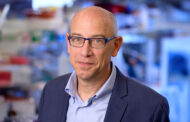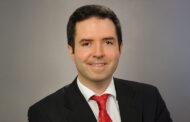IASLC CEO Karen Kelly, MD, unveiled the society’s 5-year strategic plan on Tuesday, September 12, during the annual business meeting at the 2023 World Conference on Lung Cancer. The comprehensive strategic plan, which redefines the IASLC’s mission and objectives from January 2024 through 2029, was developed over several months and is based on input from member surveys, industry partners and thought leaders, and IASLC’s committee chairs, Board of Directors, and staff.
Dr. Kelly also announced that IASLC membership had reached an all-time high in 2023 with 10,537 members as of August 24. The IASLC had 250 members in 1974, the year the society was founded, and hit its previous peak of 8,693 members in 2019 prior to the COVID-19 pandemic. Membership dipped below 6,250 from 2020 to 2022 during the height of the pandemic before rebounding with 4,361 additional members from 2022 to August 2023.
“We have registered new members here at the meeting, so the [2023] number continues to climb and the momentum that we feel has been phenomenal,” Dr. Kelly said in Singapore. “To all 10,537-plus members: Stay with us, be a part of this journey, be engaged, and help us conquer thoracic cancer. Being a member is really a relationship. We need you, and we hope that you need us—so stay a part of this exciting journey.”
Dr. Kelly also announced that WCLC 23 had a total attendance of 5,610, which included 4,616 in-person attendees in Singapore and 995 participants on the virtual platform.
2024-2029 Strategic Plan
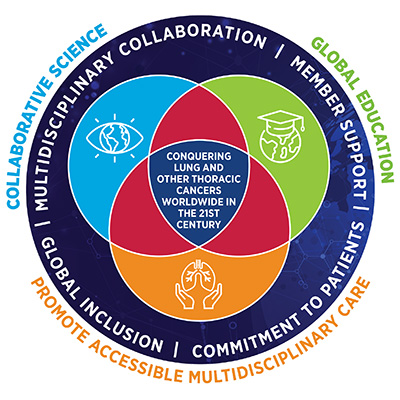
The IASLC’s new strategic plan begins with a reworked mission statement, which is to “be the multidisciplinary world authority on lung and other thoracic cancers through collaborative science, education, and advocacy in order to ensure optimal prevention and patient care.” The plan also incorporates a time element into the society’s vision statement: “Conquering Lung and Other Thoracic Cancers Worldwide in the 21st Century.”
“That time element really creates a level of accountability that is important,” Dr. Kelly said.
The strategic plan also defines the society’s primary challenge, which is overcoming “unequal global access to education, research, and treatment of lung/thoracic cancer.” That challenge is addressed in the plan’s statement of opportunity: “Expand our multidisciplinary approach to thoracic cancer prevention, diagnosis, treatment, and care across geographies and health care systems.”
The structure of the strategic plan is based on three new organizing pillars: Collaborative Science, Global Education, and Promote Accessible Multidisciplinary Care. Each pillar is defined by three outcomes, and several aims. The pillars are further defined by the society’s core enablers: Member Support, Multidisciplinary Collaboration, Global Inclusion, and Commitment to Patients.
“Each one of these pillars stand alone, but what we really like about them is that they flow from one to the other. We do the science, we do the education, and then we implement,” Dr. Kelly said.
Taken together, the pillars, outcomes, aims, and enablers are designed to serve as a roadmap; guiding the organization toward a future characterized by groundbreaking discoveries, compassionate care, and transformative impact.
Pillar 1: Collaborative Science
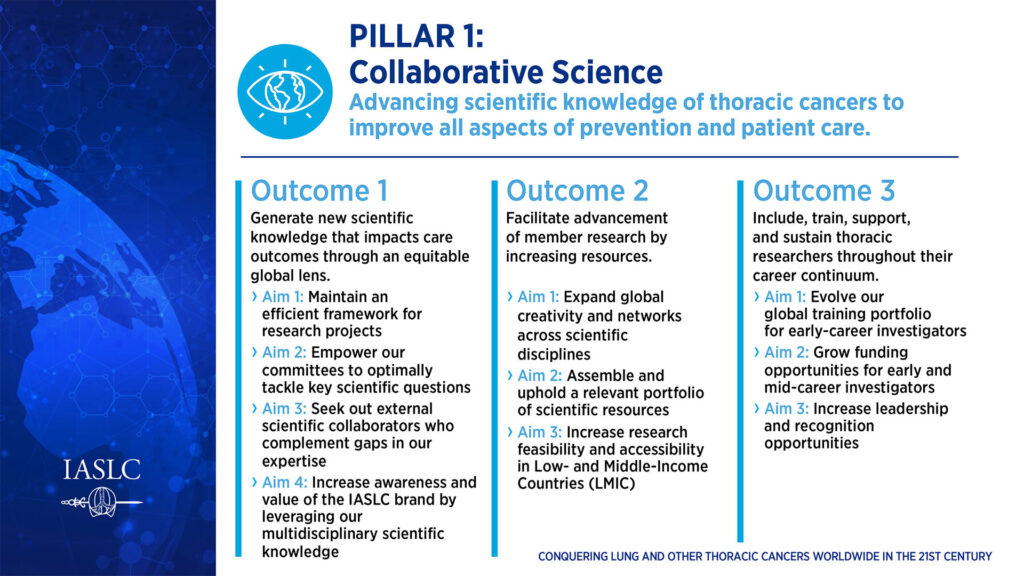
The three outcomes that define the first pillar are: Generate new scientific knowledge that impacts care outcomes through an equitable global lens; facilitate advancement of member research by increasing resources; and include, train, support, and sustain thoracic researchers throughout their career continuum.
This pillar will include three new IASLC committees: the Basic and Translational Science Committee, the Multidisciplinary Clinical Science Committee, and the Rare Tumors Committee. Nominations for the new committees opened September 25 and will close October 20. The term for the new committees begins January 15, 2024.
This pillar will also include a reorganized Career Development Committee, which will focus on the entire career spectrum rather than focusing primarily on grant reviews.
Pillar 2: Global Education
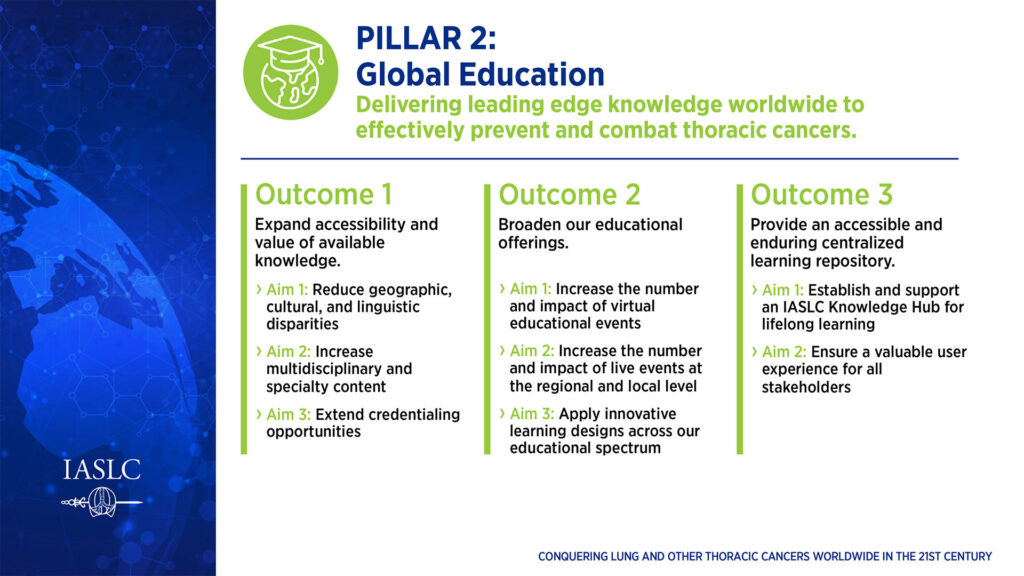
The three outcomes that define the second pillar are: Expand accessibility and value of available knowledge; broaden the IASLC’s educational offerings; and provide an enduring centralized learning repository. The committee structure in pillar 2 will undergo some changes, notably with the CME Committee becoming a subcommittee of the Education Committee. Activation of the IASLC’s new Learning Management System, which has already begun, also falls within pillar 2.
Pillar 3: Promote Accessible Multidisciplinary Care
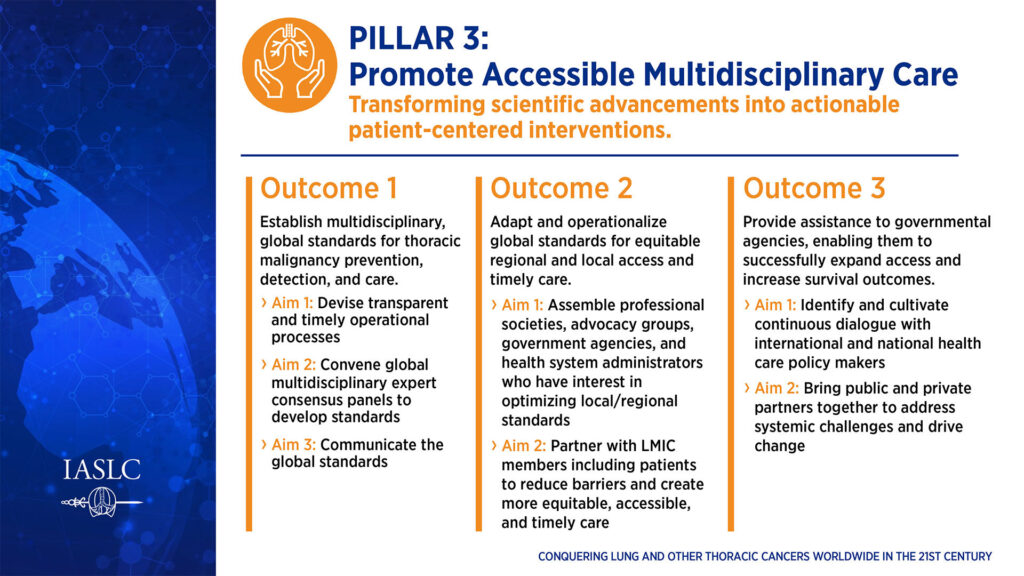
The three outcomes that define the third pillar are: Establish multidisciplinary, global standards for thoracic malignancies prevention, detection, and care; adapt and operationalize global standards for equitable regional and local access and timely care; and provide assistance to governmental agencies enabling them to successfully expand access and increase survival outcomes.
Two new IASLC committees will fall under this pillar: the Global Multidisciplinary Practice Standards Committee and the Global Policy and Partnership Committee. Again, committee nominations opened September 25 and will close October 20, with the term for the new committees beginning January 15, 2024.
Much more detail about the new strategic plan can be found at IASLC.org.
2022 Financials & New President
Also during the business meeting, IASLC Treasurer Erik Thunnissen, MD, PhD, Amsterdam University Medical Center, Amsterdam, reported top-line financials from the society’s 2022 audit. The full report is available near the bottom of the About Us page at IASLC.org.
“The take-home is that we are an organization that is in a sound financial situation,” said Outgoing IASLC President Heather Wakelee, MD, Professor and Chief of Oncology at Stanford University School of Medicine in Stanford, California. “We can be comfortable as we embark on this big vision for the next 5 years that we are going to be able to achieve our vision, make a difference in prevention, diagnosis, and treatment for patients with thoracic malignancies, and support our members at all career levels.”
To conclude the business meeting, Dr. Wakelee passed the presidential gavel to Paul Van Schil, MD, PhD, officially marking the beginning of his term as IASLC President.
“Thank you for this great honor,” said Dr. Van Schil, Professor of Thoracic and Vascular Surgery, Antwerp University Faculty of Medicine. “You’ve heard about our ambitious plans, and to implement our mission we need all of you. I am really looking forward to having you collaborate with us as we move further on this track and keep IASLC the leading organization in thoracic oncology.”


